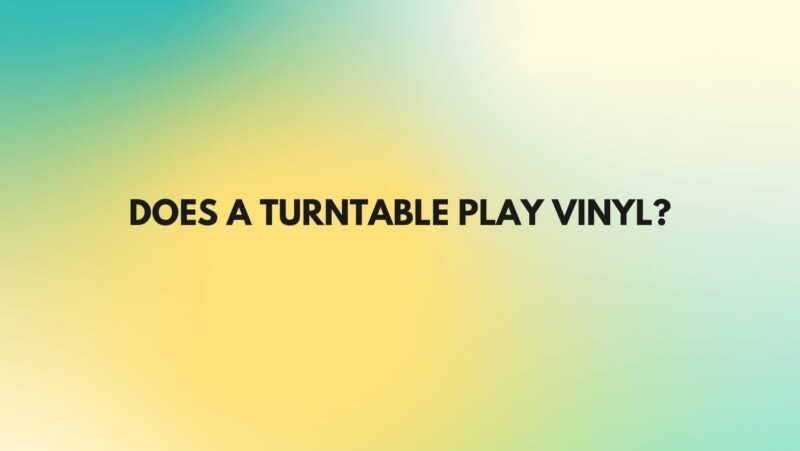Turntables, also known as record players, hold a significant place in the world of audio and music. They are cherished for their ability to play vinyl records, which provide a distinct and timeless listening experience. However, for those new to the world of analog audio, a fundamental question arises: Does a turntable play vinyl? In this comprehensive guide, we will explore the essential connection between turntables and vinyl records, the mechanics behind their operation, and the enduring appeal of this classic audio format.
Section 1: The Functionality of Turntables
At its core, a turntable is a device designed to play vinyl records. To understand how it accomplishes this, let’s break down the key components:
- Platter: The turntable’s platter is a rotating platform upon which the vinyl record is placed for playback.
- Tonearm: The tonearm is an articulated arm that extends across the platter and supports a stylus (needle) at its end.
- Stylus (Needle): The stylus is a small, precision needle that tracks the grooves on the vinyl record. As the record spins, the stylus detects the variations in the groove’s shape, translating them into electrical signals.
- Cartridge: The cartridge houses the stylus and generates electrical signals from its movements. These signals represent the audio content encoded on the vinyl record.
- Motor: A motor is responsible for spinning the platter at the appropriate speed (usually 33 1/3 RPM or 45 RPM) for the selected record.
Section 2: Types of Vinyl Records
Vinyl records come in various formats, and the type of record dictates the speed at which it should be played. The two most common types are:
- LP Records (Long Play): LP records are designed to be played at a speed of 33 1/3 revolutions per minute (RPM). They are typically used for full-length albums and can hold multiple tracks on each side. LPs are characterized by their larger 12-inch diameter.
- Single Records: Single records, often referred to as “singles,” are played at a speed of 45 RPM. They are commonly used for individual songs or shorter releases and usually contain one track on each side. Singles have a smaller 7-inch diameter.
Section 3: The Compatibility of Turntables and Vinyl Records
The primary function of a turntable is to play vinyl records, and most turntables are designed to accommodate both LPs and singles. However, not all turntables are created equal, and the compatibility may vary based on factors such as design, build quality, and features.
- Dedicated Vinyl Turntables: Traditional turntables, often referred to as “vinyl turntables,” are explicitly designed for playing vinyl records. They typically feature adjustable tonearms and speed controls to accommodate different record types and sizes.
- Modern Turntables: Many modern turntables are designed to be versatile and can play a wide range of vinyl records, including both LPs and singles. These turntables often include features like adjustable pitch control and anti-skating mechanisms for precise playback.
- Entry-Level Turntables: Entry-level turntables, such as those produced by brands like Crosley, are designed primarily for casual listening. While they can play both LPs and singles, they may have limited features and may not offer the same level of audio quality as higher-end models.
Section 4: The Timeless Appeal of Vinyl Playback
Despite advancements in digital audio technology, vinyl records and turntables continue to have a dedicated and passionate following. The enduring appeal of vinyl playback includes:
- Analog Warmth: Vinyl records are celebrated for their warm and natural sound quality, which many listeners find more immersive and enjoyable.
- Tactile Experience: Handling vinyl records and manually placing the stylus on the record’s surface provide a tactile and engaging experience that connects listeners with the music in a unique way.
- Collector’s Joy: Vinyl records are often cherished as collector’s items, with unique cover art, limited editions, and special pressings adding to their allure.
Section 5: Conclusion
In conclusion, turntables indeed play vinyl records, and this timeless combination continues to captivate music enthusiasts and audiophiles alike. Whether you’re enjoying a classic album on a vintage turntable or exploring new releases on a modern record player, the connection between turntables and vinyl records remains at the heart of analog audio enjoyment. The tactile experience, warm sound quality, and enduring appeal of vinyl playback make it a cherished and irreplaceable aspect of the music world.


